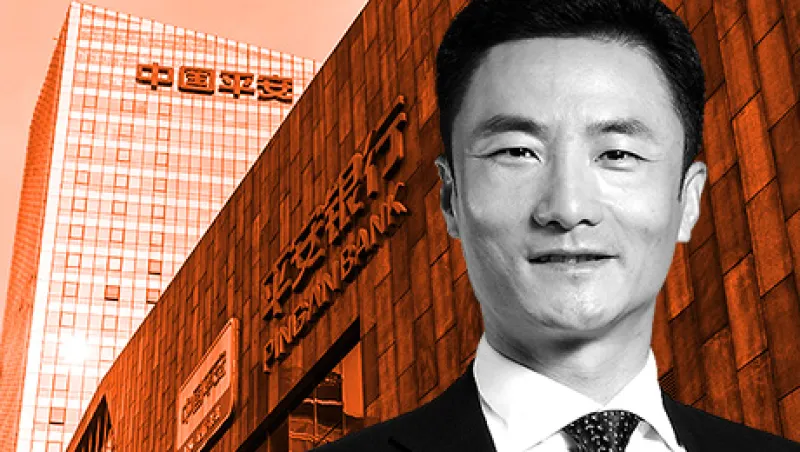China’s second-biggest life insurer has turned to technology and venture capital to drive sales in the world’s second-largest economy.
Ping An Insurance (Group) Co. of China has invested in many venture capital-backed firms in and outside the country, Alex Ren, the company’s president, said in an interview at a suite in Hong Kong’s Shanghai-La Hotel, during a recent visit to the city. Some of the firms are engaged in the latest financial, pharmaceutical and health-related technologies, which are helping Shenzhen-based Ping An increase sales and improve its offering of products and services, he said.
Ping An has paid between $5 million and $50 million for each of the stakes it purchased in the venture capital-backed firms, according to Ren, who declined to provide further details about the deals. “Our goal is to provide more and better service for our customers and nothing else,” he said. At the end of June, he added, researchers and software engineers working for Ping An had filed a total 1,458 patent applications tied to innovative technology that will help drive sales and manage risk.
Chief among the innovations is Ping An’s face recognition technology, which has a 99.8 percent accuracy reading and can identify each of its 140 million customers. Ren said that Ping An has pioneered an image-based verification system that uses facial recognition and machine deep learning to provide faster payouts on insurance claims for losses. The firm began using the technology last year, speeding up the loss verification process by 4,000 times compared with the traditional method, he said, noting that processing times may be cut to hours from days.
One of Ping An’s most successful investments is its controlling stake in Shanghai Lujiazui International Financial Asset Exchange Co., which operates an online financial products business at Lu.com. The company, known as Lufax, uses artificial intelligence to manage its online marketplace, matching buyers with sellers of investment products. Last year, about 6 trillion yuan worth of investment and wealth management products were sold to more than 7.4 million investors on Lu.com.
Ping An’s technology investments have paid off in earnings while aiding the expansion of its financial supermarket. “Our performance data is the strongest ever,” said Ren, 48. He joined Ping An in 1992, rising up the ranks to become president in 2010.
In the first six months of 2017, the firm’s net profit attributable to shareholders rose 6.5 percent from the same period last year to 43.4 billion yuan ($6.5 billion), according to Ping An’s midyear earnings report released this month. The company plans to hand out a dividend of 0.5 yuan per share, a 150 percent increase from a year earlier.
[II Deep Dive: Inside Ping An’s Massive Expansion]
Ren said Ping An’s 140 million customers buy an average 2.3 financial products or services each, the highest in China’s financial marketplace. He added that each of its customers contributes an average 241 yuan in net profits annually.
Beyond providing a plethora of insurance products, including life, auto, property and casualty and health, Ping An offers its customers banking services and investments in securities and mutual funds. The firm reaches its customers through an army of 1.3 million sales agents, as well as online sales channels that it owns and operates. For example, the firm owns Puhui.com, a micro-finance website that caters to individuals and small and medium-sized businesses.
Unlike some of its rivals, Ping An solely focuses on investing in technology to strengthen its China-based businesses, Ren said, while avoiding investments in non-core assets. “We don’t buy or invest in firms not related to our main businesses, like hotels, or sports teams, and focus on things that add value to Ping An Insurance,” he said.
Buying into sports teams or high-end hotels has gotten some of Ping An’s rivals in trouble lately with Chinese authorities, who are cracking down on financial sector risk. Most notable is an ongoing investigation into Anbang Insurance Group, which sold high-yield wealth management products in China to help fund acquisitions offshore that were not related to its core business, according to sources close to regulators. Anbang is well-known for its $1.95 billion acquisition of New York’s Waldorf Astoria hotel in 2014.
Anbang declined to comment.
Ever wary of rising financial sector risk, Chinese government officials want to see insurers investing in core businesses or assets that directly help the performance of their insurance assets. That — along with the latest technology — may well be the way to survive in China’s insurance sector.






